More info about the "SFRR-E ECR Subcommittee"
We are pleased to announce the recipients of the 2025 round of SFRR-E / Oxygen Club of California (OCC) Early Career Researcher (ECR) Fellowships.

Vanesa Cepas Lopez. Candiolo Cancer Institute, Italy
Vanesa Cepas López is a postdoctoral researcher at the University of Turin and the Candiolo Cancer Institute FPO-IRCCS (Italy). She earned her PhD in Biomedicine and Molecular Oncology in 2020 from the University of Oviedo (Spain), where she studied the role of the antioxidant enzyme superoxide dismutase 2 in cell differentiation in spermatogenesis and prostate cancer, gaining expertise in stem cell differentiation and redox biology. Motivated by a strong interest in cancer research, she joined Luca Primo’s lab at the University of Turin and the Candiolo Cancer Institute FPO-IRCCS the same year, where she has been integrating her background in redox biology with advanced models such as patient-derived organoids. She has been awarded postdoctoral fellowships from the Italian Association for Cancer Research (AIRC), Marie Skłodowska-Curie Actions, and the Umberto Veronesi Foundation. Her research focuses on how redox dynamics influence breast cancer progression, treatment response, and cancer stem cell plasticity, using breast cancer patient-derived organoids and compartment-specific genetically-encoded redox biosensors to uncover novel therapeutic vulnerabilities.
Project title: Exploiting redox dynamics as a therapeutic strategy for breast cancer
Breast cancer (BC) is the most frequently diagnosed cancer and leading cause of cancer-related mortality in women worldwide. Common cancer treatments such as radiotherapy and chemotherapy generate reactive oxygen species (ROS). Increasing ROS in cancer cells can promote or suppress the tumorigenic process, depending on the extent of redox stress, its spatiotemporal characteristics and the tumour microenvironment, ultimately having implications for tumour initiation, metastatic dissemination and tumour relapse.
The hypothesis for this project is that cellular redox state could be modulated as a strategy to improve BC treatment. This requires understanding the spatiotemporal production of redox species and their consequences for tumour biology as well as the effects of most common BC treatments on redox dynamics and tumour redox landscape. Two innovative methodologies will be combined: BC patient-derived organoids, a model that closely recapitulates the phenotypic diversity of the tissue of origin, maintaining its cellular and molecular heterogeneity; and genetically-encoded redox biosensors, which enable real-time analysis of redox species production in specific subcellular compartments. This will shed light on tumour redox biology to uncover redox-associated vulnerabilities in tumour cells that allow to formulate new therapeutic approaches able to increase conventional therapy effectiveness for BC treatment.

Tim Baldensperger. University of Vienna, Institute of Biological Chemistry, Austria
Dr. Tim Baldensperger completed his PhD in the research training group “Protein Modifications: A Key Mechanism in Aging” at Martin-Luther-University (Halle, Germany) in 2020. His work initially focused on advanced mass spectrometric techniques to identify non-enzymatic post translational modifications and revealing their significant role in the aging process.
Following his doctoral studies, Tim joined the Grune lab at the German Institute of Human Nutrition (Potsdam, Germany), where he developed a novel isolation method for the oxidatively cross-linked protein aggregate lipofuscin. This authentic material was used to validate the mitochondrial-lysosomal axis theory of aging in cell culture.
Currently, he is a postdoctoral fellow in protein chemistry at the University of Vienna (Vienna, Austria). His latest research utilizes solid-phase peptide synthesis and expressed protein ligation to elucidate the effects of protein modification by oxidative and carbonyl stress on protein aggregation.
Project title: Advancing Strategies to Combat Lipofuscin Toxicity
Lipofuscin is an oxidatively cross-linked aggregate consisting of proteins, lipids, and metal ions that progressively accumulates in post-mitotic tissues, such as the brain, muscle, and heart, during ageing. Lipofuscin accumulation is strongly correlated with cell death and age-related diseases.
This project aims to comprehensively elucidate the mechanisms driving lipofuscin formation. Advanced mass spectrometry-based techniques will be employed to identify key protein components and quantify posttranslational modifications in authentic human lipofuscin samples. This data will provide critical insights into the cellular origins and molecular pathways involved in lipofuscin formation.
Furthermore, potential therapeutic strategies to mitigate the harmful effects of lipofuscin accumulation in a neuronal cell model will be investigated. Approaches such as inhibiting pathways of cellular uptake, reducing oxidative stress through Nrf2 activation, inhibiting cathepsin B to prevent damage after lysosomal membrane permeabilization, and blocking caspase 1 activity to stop cell death by pyroptosis will be evaluated.
We are pleased to announce the recipients of the 2024 round of SFRR-E / Oxygen Club of California (OCC) Early Career Researcher (ECR) Fellowships.

Montserrat Vega. Pompeu Fabra University (Spain)
Montserrat Vega is a postdoctoral researcher at Pompeu Fabra University (Spain). In 2016 she obtained a double PhD in Functional and Molecular Biology from the University of Oviedo (Prof. Fernando Moreno lab) and the University of Osnabrück (Prof. Jürgen Heinisch lab) studying glucose transcriptional response in Saccharomyces cerevisiae. In 2017 Montserrat joined the laboratory of Elena Hidalgo at Pompeu Fabra University. She is interested in studying the molecular mechanism that control aging in Schizosaccharomyces pombe, specifically in uncovering the connection between mitochondrial function, aging and how a deregulation of the different mechanisms in charge of controlling mitochondrial homeostasis could alter lifespan.
This information was published in June 2024, if you need updated information, please contact the award winner.
Project title: Uncovering the role of respiratory supercomplexes in aging
Aging is characterized by a general decline in cellular functions that leads to higher risk of disease and finally to death. Health span is affected not only by the environment, but it is also determined by genetic traits and by molecular pathways. There is a strong correlation between aging and cellular metabolism, proved by the fact that calorie restriction extends lifespan of different species. The main metabolic pathway for energy production is oxidative phosphorylation that takes place within the mitochondria. Cells can sense glucose levels and finetune ATP production accordingly. Regulation of the respiratory capacity can take place at different levels: transcriptomic, proteomic, or regulation of mitochondrial activity. Regarding the last, one of the mechanisms that has been recently described to increase respiratory efficiency is the arrangement of individual respiratory complexes into major structures called supercomplexes (SCs). Although some aspects of their functional organization remain still under study, it has been proposed that SCs maximize the electron flux and decrease ROS production. By using the yeast Schizossacharomyces pombe, this proposal aims at: (i) identifying key factors involved in the functional composition of SCs and (ii) studying their possible function in respiratory efficiency, ROS production and connection with the aging process.

Timoteo Marchini. University Medical Center Freiburg (Germany)
Timoteo Marchini is the Deputy Lab Head of the Vascular Immunology Laboratory (PI: Prof. Dr. Dennis Wolf) at the Department of Cardiology and Angiology of the University Medical Center Freiburg (Germany). After obtaining his Biochemistry degree at the University of Buenos Aires (Argentina), he conducted his MSc and PhD studies on redox and mitochondrial mechanisms leading to impaired cardiac contractility in mice exposed to air pollution particles (PM2.5). During his first postdoctoral training at the “Instituto de Bioquímica y Medicina Molecular Prof. Alberto Boveris (IBIMOL-UBA-CONICET)”, Timoteo studied inflammatory pathways in ischemia/reperfusion injury and myocardial remodelling in mice exposed to polluted urban air. Currently, his research focuses on redox and immune mechanisms linking air pollution PM2.5 exposure and the accelerated development of risk factors for cardiovascular disease, such as obesity. Timoteo has received several international awards, including the 2019 YIA (OCC), the 2021 YIA (SFRR-E), and the 2022 Future of Redox Award (SFRR-I). He has also been actively involved in outreach activities, including the publication of several scientific communication articles and book chapters related to his research.
This information was published in June 2024, if you need updated information, please contact the award winner.
Project title: Heterocellular crosstalk in PM2.5-induced metabolic derangements: Deciphering the interplay of redox and inflammatory pathways
In Europe, air pollution causes ~790,000 premature deaths per year, with nearly half linked to cardiovascular diseases (CVD). Notably, it has been increasingly highlighted that the development of risk factors for CVD (e.g., hypertension, obesity, and diabetes) partially explains the negative health impact of air pollution on CVD incidence and mortality. Among a complex mixture of several toxic chemical compounds, airborne particles smaller than 2.5 μm (PM2.5) are the most hazardous air pollutant. PM2.5 exposure impairs pulmonary redox metabolism and inflammation, orchestrated by lung resident immune cells known as alveolar macrophages. This promotes a systemic response that alters function in distant organs, including the blood vessels, the heart, and adipose tissue. However, the interaction between immune cells and
adipocytes leading to PM2.5-induced metabolic derangements that are associated with aggravated CVD is poorly understood. This project aims to unravel cell-specific effects of PM2.5 in adipose tissue, with particular focus on the mechanistic link between altered redox metabolism and inflammatory pathways. The present research will highlight the contribution of environmental factors in the development of risk factors for CVD and, ultimately, will build the conceptual basis to design interventional strategies in the future, as well as to increase awareness within the general population.

Valeria Cordone. University of Ferrara (Italy)
Valeria Cordone graduated in Biotechnologies at the University of L’Aquila (Italy), and achieved the Ph.D. in Cellular and Molecular Biotechnologies (2019). Since 2019 she has been a post-doc fellow at the University of Ferrara. In 2020, she won a prestigious Post Doctoral Fellowship, founded by Umberto Veronesi Foundation and ProRETT Onlus, presenting a project entitled ‘Role of inflammasome in Rett Syndrome’. Her research mainly focuses on investigating molecular and cellular mechanisms related to the synergistic condition of oxidative stress and chronic subclinical inflammation (“OxInflammation”), involved in the pathogenesis of neurodevelopmental disorders, like Rett Syndrome. These studies involve the analysis of pathways upstream and downstream of the inflammasome activation, as well as the interaction between Nrf2 and NF-κB, in mediating the OxInflammatory damage and participating in the multi-systemic alterations characterizing the aforementioned pathology.
This information was published in June 2024, if you need updated information, please contact the award winner.
Project title: Role of mitochondria on NLRP3 inflammasome alterations in Rett syndrome
Rett syndrome (RTT) is a severe neurodevelopmental disorder with a genetic cause (i.e., loss-of-function mutations of MECP2 gene). Beside the neurological aspects, RTT patients show a multitude of co-morbidities, affecting other organs and tissues, as well as impaired cellular/molecular signalling pathways, including mitochondrial dysfunctions, oxidative stress, and an altered immune-inflammatory status, acting in a vicious circle defined as ‘OxInflammation’. A constitutive activation of NLRP3 inflammasome system, which is a multi-protein complex involved in innate immune responses against both pathogens and ROS-related cellular stress, has recently been shown to play a critical role in the sub-clinical inflammation typical of this pathology.
In light of this, the proposed project aims at investigating whether an excess of reactive oxygen species or an impairment of mitophagy (a crucial process where damaged mitochondria are delivered to lysosomes for their removal) may be involved in the continuous stimulation of NLRP3 inflammasome system, occurring in RTT condition. The results of this project will help to elucidate new molecular mechanisms underlying this complex pathology.

Nikos Margaritelis. Aristotle University of Thessaloniki (Greece)
Nikos Margaritelis is an Assistant Professor of Research Methods and Data Analysis at the Department of Physical Education and Sports Science of the Aristotle University of Thessaloniki, Greece. During his PhD, his work focused on the redox inter-individual variability and its implications on differential physiological and biochemical responses and adaptations after exercise. Over the past years, he aimed to investigate the potential need for personalized interventions based on the observed redox heterogeneity among individuals, exemplified by subject-tailored antioxidant supplementation schemes. To this aim, he designed and implemented methodological designs and analyses in order to contribute to a nuanced understanding of redox personalization. In addition to his primary focus, his research interests also include: (i) the practicality of the erythrocyte as a ‘model’ for studying the intersection of redox biology and physiology; (ii) the translational potential of oxidative stress biomarkers; and (iii) the epistemological foundations of the oxidative stress concept.
This information was published in June 2024, if you need updated information, please contact the award winner.
Project title: Exploring human personalized redox biology with N-of-1 trials: the RedoxOne project
Personalized treatments are considered the scientific breakthrough that will revolutionize healthcare systems and promote well-being. At the same time, redox biology processes are increasingly recognized an essential part of health and disease.
Clinical trials using redox agents yielded conflicting results, which stressed the potential need for personalized strategies. Currently, personalized treatments remain more of a buzzword instead of a routine practice. The RedoxOne project is a translational redox-oriented version of personalization, built upon the idea that even the fundamental prerequisites of personalized treatments have not been confirmed, which could partially explain the ‘failure’ of the personalized concept. Specifically, personalization presupposes that (i) large interindividual redox variability exists; (ii) this variability is biologically meaningful; (iii) the response of each individual is truly unique. RedoxOne aspires to unravel these issues by conceptualizing and exploiting a novel methodological approach, the N-of-1 trials. This demands the synthesis of several fields, which for the needs of the project are redox biology, metabolism, research methods, statistics and exercise physiology. RedoxOne will add scientific and translational potential to deliver a unifying theory for personalized interventions. Are humans really redox unique? Or more elegantly, are we as diverse as we think we are, to necessitate personalized redox treatments?
We are pleased to announce the recipients of the 2023 round of SFRR-E / Oxygen Club of California (OCC) Early Career Researcher (ECR) Fellowships.

Sophie Hendrix. Hasselt University (Belgium)
Dr. Sophie Hendrix is a postdoctoral researcher at Hasselt University (Belgium). She investigates plant responses to abiotic stress factors with a strong focus on redox processes. During her PhD at Hasselt University, she studied the effects of cadmium stress on cell cycle regulation and the DNA damage response in Arabidopsis. Afterwards, she worked as a Humboldt postdoctoral fellow at the University of Bonn (Germany), where she investigated plant responses to heat stress using genetically encoded biosensors and studied the role of plant glutathione peroxidase-like proteins. Her current work focuses on unravelling the involvement of the SOG1 transcription factor in oxidative signalling in plants.
This information was published in 2023, if you need updated information, please contact the award winner.
Project title: SUPPRESSOR OF GAMMA RESPONSE 1 – A novel mediator of oxidative signalling in plants?
Cadmium (Cd) pollution is a significant environmental concern and Cd uptake in plants poses a major threat to global food security. Hence, it is crucial to increase our knowledge on plant responses to Cd stress. My PhD research revealed that the transcription factor suppressor of gamma response 1 (SOG1) contributes to Cd-induced cell cycle inhibition in Arabidopsis thaliana. Furthermore, I identified a novel role for SOG1 in Cd-induced oxidative signalling. The sog1-7 knockout mutant displayed an enhanced tolerance to short-term Cd exposure, which coincided with delayed Cd-induced reactive oxygen species (ROS) production and transcriptional activation of ethylene biosynthesis and signalling. However, the larger extent of lipid peroxidation in this genotype upon prolonged Cd exposure suggests that the lack of appropriate oxidative signalling results in sub-optimal stress acclimation. In the proposed project, I aim to further characterize this newly identified role of SOG1 and identify the SOG1 downstream targets mediating Cd-induced oxidative signalling via a combination of genetic, molecular and biochemical approaches. Furthermore, I will investigate whether SOG1 also mediates oxidative signal transduction upon exposure to salinity, heat and methyl viologen to reveal whether this transcription factor plays a conserved role in plant responses to ROS-inducing stress condition.
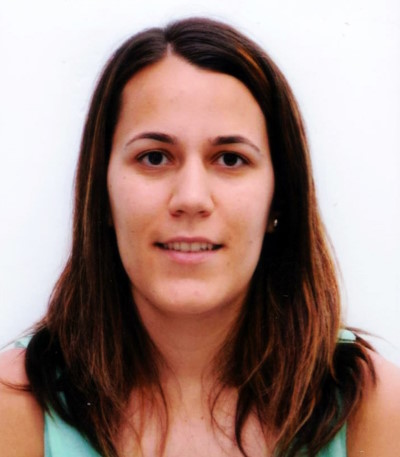
VERÓNICA MIGUEL. Spanish National Centre for Cardiovascular Research
Dr. Verónica Miguel is a postdoctoral researcher in the immunobiology laboratory at the Spanish National Centre for Cardiovascular Research (Dr. David Sancho´s lab). She completed her PhD at the Center for Molecular Biology "Severo Ochoa” in Spain (Dr. Santiago Lamas´ lab), receiving the Extraordinary PhD Award from the Autonomous University of Madrid. She has been dedicated to investigate the metabolic alterations underlying chronic kidney disease, demonstrating that the enhancement of fatty acid oxidation protects against the development of renal fibrosis. She also identified new miRNAs involved in renal fibrosis directly related with the regulation of redox and metabolic pathways. Her research training has included four stays in the USA, in laboratories of Alabama, Yale, Pennsylvania and Harvard Universities. In 2021, she joined Dr. Kramann’s laboratory at the University Hospital RWTH Aachen, supported by a postdoctoral FEBS Long-Term fellowship, where she developed novel techniques enabling the study of metabolism in renal organoids. She now aims to decipher novel metabolism-oriented immunotherapeutic approaches based on the mitochondrial rewiring of macrophages.
This information was published in 2023, if you need updated information, please contact the award winner.
Project title: Boosting fatty acid oxidation to target macrophage function: role of mitochondrial reactive oxygen species.
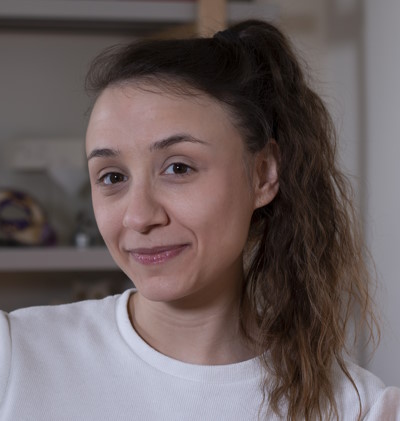
Anna Gioran. National Hellenic Research Foundation in Athens, Greece
Dr. Anna Gioran carried out her graduate training at the German Center of Neurodegenerative Diseases (DZNE) in Bonn, Germany. During this time, she studied the effects of mitochondrial deficiency on the morphology of the nematode’s neurons. In her first postdoctoral fellowship she continued at the DZNE and she focused more on mitochondrial deficiencies and specifically on their metabolic implications and manners to rescue its detrimental effects at organismal level. At the moment, she is conducting postdoctoral research in the group of Dr. Niki Chondrogianni at the National Hellenic Research Foundation in Athens, Greece, focusing on the interplay between proteostatic mechanisms and mitochondrial function.
This information was published in 2023, if you need updated information, please contact the award winner.
Project title: The role of UPRER and mitochondria in proteasome activation-induced longevity in C. elegans
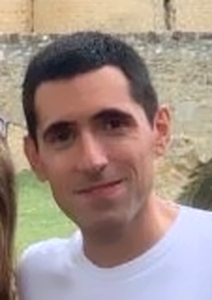
Pedro Gonzalez Menedez. University of Oviedo (Spain)
Dr. Pedro Gonzalez Menedez fulfilled his PhD training in Dr. Rosa Sainz’s group at the University of Oviedo. His thesis, supported by the FPU program (Spanish Government), focused on GLUT transporters' role during prostate cancer progression. On the one hand, he described for the first time the expression of the insulin-dependent GLUT4 in prostate cancer cells (Endocrinology, 2014). In a second article, he found that androgen-sensitive cells are more resistant to glucose deprivation-dependent cell death by overexpressing GLUT1 and protecting oxidative stress by maintaining glutathione levels (Redox Biology, 2018). As part of his predoctoral training, he was selected for a European Association for Cancer Research short stay award in the group of Naomi Taylor in the Institut de Genétique Moléculaire de Montpellier (IGMM) at the Centre National de la Recherche Scientifique (CNRS). In 2018, he joined her group as a postdoctoral researcher under the supervision of Sandrina Kinet. First, he was supported by the Clarin-COFUND EU Program ("Gobierno del Principado de Asturias", Marie Curie Action), and then through an NIH PO1 grant. He studied the impact of mitochondrial oxidative stress during late terminal erythropoiesis (Cell Reports, 2021), and the role of the hypusinated-eIF5A in mitochondrial activity during erythropoiesis (Blood, 2023). In 2022, he rejoined the University of Oviedo with a “María Zambrano” grant into the “Redox biology and metabolism in cancer” team. Since 2023, he is a researcher funded by the “Ramón y Cajal” program (Spanish Government).
This information was published in 2023, if you need updated information, please contact the award winner.
Project title: Crosstalk between the redox regulation of erythropoiesis and diabetes
We are pleased to announce the recipients of the inaugural round (2022) of SFRR-E / Oxygen Club of California (OCC) Early Career Researcher (ECR) Fellowships.

Carlos Henriquez-Olguin. University of Copenhagen, Denmark
Carlos Henriquez-Olguin obtained his Master's Degree in Physiology at the University of Chile, investigating the role of NOX2 on inflammatory signaling in dystrophic muscle cells. He performed a double degree Ph.D. between the University of Chile (Jaimovich E. Lab) and the University of Copenhagen (Jensen TE. Lab), studying the role contribution of subcellular ROS sources during exercise in mouse and human skeletal muscle. Carlos works at the University of Copenhagen, investigating compartmentalized redox signals and skeletal muscle metabolism. He has received several international awards, including the 13th Biochemistry of Exercise Young Investigator Award, the 2022 Catherine Pasquier Award (SFRR-E), and the 2022 Future of Redox Award (SFRR-I).
This information was published in 2022, if you need updated information, please contact the award winner.
Title: Disruption of redox compartmentalization as a driver of skeletal muscle insulin resistance.
Carlos will pursue a unique combination of metabolic research using state-of-the-art redox imaging biosensors, compartment specific chemogenetic H2O2 generation tools, and advanced redox proteomics to overcome the methodological challenges associated with the study of redox signaling in physiological settings. This study will significantly push state of the art in understanding the determinants of redox signaling and its biological consequences in tissue and compartment-specific context.
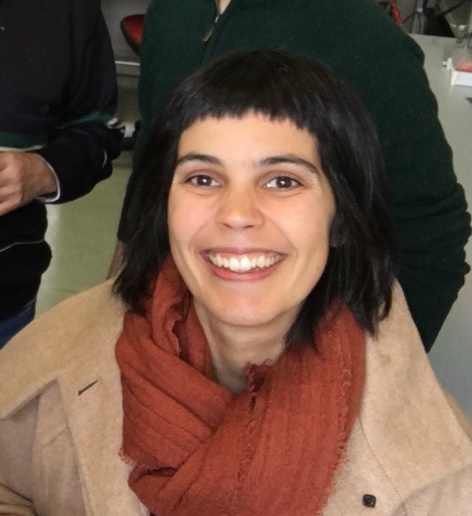
Bárbara Rocha. University of Coimbra, Portugal
Bárbara Rocha is an Assistant Professor at the Faculty of Pharmacy, University of Coimbra (Portugal). She has a BSc in Pharmaceutical Sciences, a MSc degree in Medicine and a PhD in Pharmaceutical Sciences (University of Coimbra). In collaboration with the University of La República (Uruguay) and the Karolinska Institute (Sweden), she studied the biochemical interactions of polyphenols and dietary nitrate in the human stomach, establishing the proof of concept that phenols promote the non-enzymatic production of nitric oxide. She has also shown that pepsin is nitrated and inactivated by dietary nitrate in the stomach and that nitrated pepsin prevents the development of peptic ulcers. Currently, she is studying the impact of nitrate on gut microbiota and microbiota-host redox interactions during antibiotic treatment.
This information was published in 2022, if you need updated information, please contact the award winner.
Title: The impact of redox signalling on microbiota-gut-brain communication: shedding light on how dietary nitrate signals from the gut to the brain.

Brandan Pedre Perez. KU Leuven, Belgium
Brandán is a Marie Sklodowska Curie postdoctoral fellow at the KU Leuven Lab for Nanobiology. He is a thiol-based redox biologist who specializes in genetically-encoded fluorescent biosensors, hydrogen peroxide biology and persulfide signalling. He graduated in 2017 from the Vrije Universiteit Brussel with a Ph.D. in bioengineering sciences (Joris Messens' lab), which was followed by a 3.5-year postdoctoral research at the German Cancer Research Center (Tobias P. Dick's lab). His current work focuses on the development of hydrogen peroxide fluorescent biosensors, such as the state-of-the-art HyPer7, with smart photophysical properties for super-resolution microscopy.
This information was published in 2022, if you need updated information, please contact the award winner.
Title: Photophysically smart biosensors to monitor hydrogen peroxide trafficking in hypoxia-reoxygenation events.

Sarah Chapple. King’s College London, UK
Sarah is a Lecturer in Physiology within the Vascular Biology & Inflammation Section, King’s College London, U.K. Her research seeks to characterize the impact of diabetes and obesity on vascular function. She is particularly interested in how oxidative stress in adverse pregnancy can influence the risk of both mothers and offspring developing cardiometabolic disease in later-life. Using both in vitro and in vivo models, her research explores how induction of the redox-sensitive transcription factor Nuclear Factor Related Factor 2 (Nrf2) using phytochemicals may be protective against adverse outcomes associated with obese, diabetic pregnancy across the life-course.
This information was published in 2022, if you need updated information, please contact the award winner.
Title: Rescuing islet oxidative stress through Nrf2 induction in adverse pregnancy.
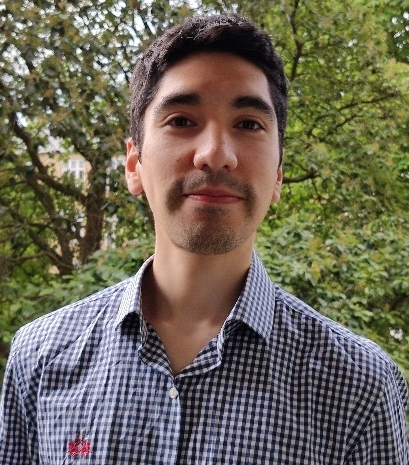
Eduardo Fuentes Lemus University of Copenhagen, Denmark
Eduardo Fuentes-Lemus graduated as a Pharmacist from the Pontifical Catholic University of Chile (2014) and received his PhD in Chemistry in 2018. He has been a Postdoc in the Department of Biomedical Sciences (University of Copenhagen) since 2020 after receiving an Individual Fellowship under the programme Horizon 2020 (European Commission, Marie Skłodowska-Curie Actions). His current research interests include understanding different physico chemical aspects that modulate protein oxidation and glycation, particularly the effect that biological interfaces, crowding and microdomains would have on the pathways and kinetics of protein modification.
This information was published in 2022, if you need updated information, please contact the award winner.
